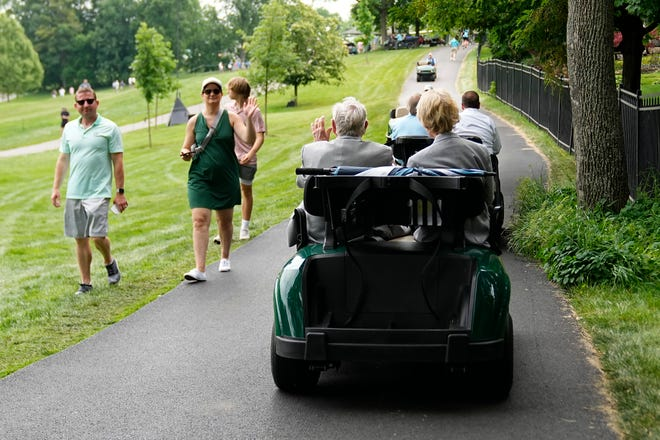Despite signs warning drivers to turn back, red reflectors, and sometimes flashing lights, wrong-way crashes have increased throughout Ohio in recent years.
Just this week, four people, including two from Columbus, were killed in a wrong-way crash on Interstate 71 in Morrow County. The crash, which occurred in the early hours of Sunday morning, will likely be one of dozens reported this year in Ohio.
In 2022, 105 wrong-way collisions occurred on Ohio highways, marking an increase from 78 in 2019, said Matt Bruning, an Ohio Department of Transportation (ODOT) spokesman. Preliminary data for 2023 shows that 182 wrong-way crashes occurred on divided highways in the state last year, although that includes both drivers who entered the highway via an exit ramp and those who crossed over a median while on the road, according to the Ohio State Highway Patrol.
Read More:Who was behind the wheel? State patrol reveals details about deadly I-70 crash in Ohio
And while wrong-way collisions make up a fraction of all car crashes — 0.01% of 1.05 million to be exact — they are 40 times more likely to end in death, Bruning said. Due to the danger they pose, ODOT plans to begin installing new wrong-way detection systems on 31 Columbus exit ramps later this year.
“They are extremely rare, but when they happen they’re more likely to be deadly,” Bruning said. “When they do happen, they’re almost always going to make the news because they’re so severe and so impactful. … They can shut down an interstate for several hours.”
When drivers enter the highway on an off-ramp where a new detection system is located, they’ll see flashing lights warning them that they’re headed in the wrong direction. The sensors notify law enforcement that someone has attempted to get on the highway at an exit ramp, Bruning said.
ODOT tested an early version of the system at an Interstate 670 exit ramp on Neil Avenue in Columbus and at another off-ramp in the Cleveland area.
Since then, the agency has installed 61 of them on exit ramps along I-71 in Cincinnati, Bruning said. In 2022, Bruning said those sensors in Cincinnati alerted law enforcement to 63 instances when drivers entered the highway the wrong way before turning around and they’ve led to a 50% decline in wrong-way crashes on that 18-mile stretch of interstate.
“These aren’t going to prevent all crashes, but they can certainly reduce the risk of them,” Bruning said.

Where are wrong-way crashes happening in Ohio?
The majority of wrong-way crashes occur in just 17 of Ohio’s 88 counties.
ODOT estimates that 82% of that type of collision occur in Franklin, Licking, Hamilton, Belmont, Cuyahoga, Greene, Jefferson, Lake, Lorain, Lucas, Mahoning, Montgomery, Richland, Stark, Summit, Trumbull and Wood counties. While the 17 counties are home to some of Ohio’s largest cities, they also have some of the highest number of highway interchanges, according to ODOT.
Signage, reflectors and striping has been added to highways in each of the counties over the years to try to cut down on wrong-way crashes.
“We’re looking at signage if we notice any area that has a higher frequency… (we’re) always just maintaining high visibility and continuing to work with our partners to see what we can do on the road but also off the road,” said Lt. Ray Santiago, spokesperson for the Ohio State Highway Patrol.
When a driver gets on a highway via an exit ramp, Bruning said it often doesn’t take long for an accident to occur. On average, Ohioans moving along a road in the wrong direction travel around 0.72 miles before causing a crash, according to ODOT.


































